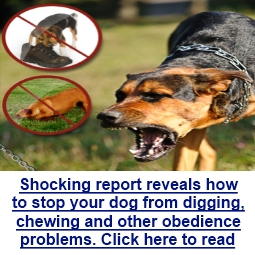 It’s not uncommon for dogs to suffer persistent itchiness that leads to scratching. This affliction not only bothers pets, but their owners as well.
It’s not uncommon for dogs to suffer persistent itchiness that leads to scratching. This affliction not only bothers pets, but their owners as well.
There are a number of reasons behind this, but there are ways to stop dog scratching. Any owner needs to deal with this issue early on, lest your dog scratch himself raw and risk other complications.
Why is my dog itchy?
Before you get to the business of stopping dog scratching, you need to know and understand the underlying factors that trigger the problem.
If your dog exhibits any symptoms characterized by raw skin, lesions and hair loss in certain spots, it could be a bacterial issue. Harmful microorganisms could very well be causing your dog unbearable discomfort.
Just like humans, dogs can also experience an adverse reaction to certain types of food or substances that may irritate their skin. The presence of ticks and airborne impurities may be wreaking havoc on your dog’s well-being.
Click here now to learn how to stop dog scratching!
Thus, it’s important not to expose a dog to excessive outdoor activities which increases the risk of irritation and subsequent scratching.
A malnourished pet can also end up scratching him or herself. Bad skin is often caused by a simple lack of vitamins and minerals; this could lead to all sorts of epidermal woes, which are typically characterized by itchiness.
Of course, little critters like ticks and fleas are well-known harbingers of itchiness. When they latch on to your dog’s skin, contact with these bloodsuckers will cause inflammation which in turn triggers the urge to scratch.
A veterinarian will be able to prescribe an effective combination of anti-flea shampoo and other external treatments to kill those bothersome pests.
However, it could all be in your dog’s head. Sometimes, there is no external reason why your dog is subject to fits of scratching. The culprit could be that he or she is simply bored and needs to get out more.
All dogs require varying amounts of physical activity to keep an alert mind and a good disposition. A healthy dose of fun and socialization could rid your pet of his or her nervous tic.
Given these factors, you have to pinpoint which of these things are giving your pet grief. Once you’ve correctly diagnosed the cause, only then can you begin to stop scratching.
Getting Professional Help
It’s vital for your local vet to have a look at your dog. He or she will be able to perform a battery of tests which will narrow down the suspected causes.
An external infection of a biological origin can be remedied through a variety of topical treatments.
In case it’s allergic in nature, you can also stop dog scratching by changing what your pet eats as well as medications to inhibit the adverse reaction.
And as said earlier, ticks and fleas will go away with the right treatment such as flea collars and powder, external sprays, and medicated body washes.
Yes! I want to learn how to stop dog scratching!
Putting an End to Head Games
One of the most challenging aspects of stopping dog scratching is when it’s triggered by an emotional cycle. There are no direct physical causes in this case, so it’s more difficult to deal with such an intangible problem.
As such, you need to get in your dog’s head and help him undo the mental habits which are causing him to scratch. Like we mentioned before, abnormal amounts of anxiety and emotional stress will drive a dog to act out in different ways.
And as you’ve probably guessed, the need to scratch is one of these side effects; it’s right up there with excessive licking, biting, and chewing. Under the right conditions, this can serve as a coping mechanism which serves as a psychological release for your dog.
One strategy to counter this is by applying a foul-tasting but otherwise harmless spray which contains citronella. The scent is also quite unpleasant, which makes this ideal for the areas where your dog likes to chew, lick and bite.
You might have also seen one of those neck cones which will physically prevent a dog from resorting to scratching. This is also a good measure but like the spray, it doesn’t address the actual issue.
Hence, you need to redirect all that built-up energy towards constructive channels. Running, playing catch, walks in the park and other activities will prevent frustration from not doing anything all day.
It’s vital that you closely monitor your dog’s condition to see if the scratching goes away after trying the solutions we’ve discussed here. Otherwise, it’s time for another trip to the vet in order to re-assess the problem and finally stop your dog’s scratching.
As with other typical canine ailments, you need to be on top of these things so that they don’t get out of hand. It really boils down to looking out for the warning signs and taking immediate action.
Click here and STOP dog scratching now!
